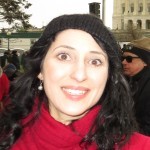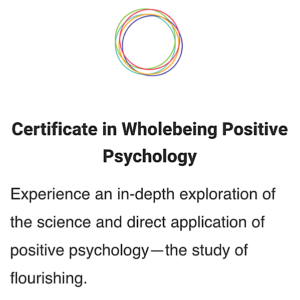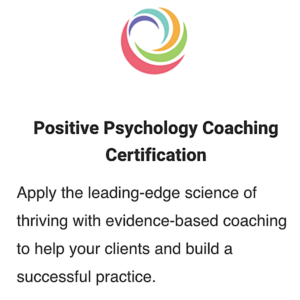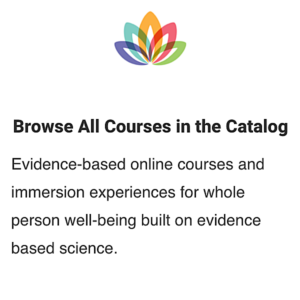by Mina Simhai
“Most powerful is he who has himself in his own power.”
—Lucius Annaeus Seneca
Amy Cuddy opens Chapter 5 of her fascinating new book, Presence: Bringing Your Boldest Self to Your Biggest Challenges, with the quote above. In Presence, Cuddy doesn’t just explain cutting-edge research and share poignant stories; she offers us simple, practical tools that help us move into our own power.
Amy Cuddy taught the world about “power poses” in her 2012 TED Talk (the second most viewed talk in TED’s history). She discovered that when we put our bodies in power poses, we actually feel more powerful, and those feelings of power lead to better performance under stress. As a result of her TED Talk, students around the world are standing in a victory V (arms spread overhead) before exams, public speakers are practicing their “Wonder Woman stance” in the bathroom before they go on stage, and many others are learning to become bolder as they face their challenges.
Presence in Presenting
I wanted to play with power poses, too. My first experiment? Power posing before teaching my positive psychology class at George Washington University. Before leaving my house, I struck my poses. For good measure, I practiced again in an (empty) bathroom at GW right before I taught. While teaching, I applied some of Cuddy’s other techniques: walking (not pacing, which portrays nervousness); speaking from somewhere other than the front of the room; and gesturing with my whole arm, not just the forearm (Cuddy teaches us to avoid “penguin arms”). When I noticed that one of my feet had come off the ground, I rooted them both firmly.
The results? My students looked engaged (or maybe that’s just my “no cellphones in class” policy). We had a lively discussion running the gamut from sexual confidence to how learning to fail can lead to more success. Before the students left, many of them shared that our conversation had shifted their thinking from the idea that “perfectionism helps me succeed” to “being an optimizer and learning from failure will help me succeed” (for more on optimizing, see Tal Ben-Shahar’s book Being Happy: You Don’t Have to Be Perfect to Lead a Richer, Happier Life). A couple of students even admitted that they had been moved to tears. I left class feeling excited, inspired, and lucky that I actually get paid to do this.
After class, I sat in my car ready to declare my experiment with presence a success. Then I realized that, while I was feeling very positive, that’s how I usually feel after I teach. This being an unscientific experiment, I wasn’t sure how to measure my results and I didn’t have a true “control” I could use for comparison. How could I know if practicing presence had worked for me? Then my phone rang and it became clear …
Presence and Positive Self-Regard
The director of my son’s school was returning my call. I explained to her that I had forgotten to send my son’s homemade valentine to school with him, and I wanted to figure out how I could get his “good start” on a valentine to school so he could complete it and participate in the exchange later that day. Simple enough.
It was what I didn’t say—or think—that was notable during this exchange. I was able to own my mistake and figure out how to fix it without berating myself, apologizing 10 times, saying what an idiot I am or making excuses to show that I really am a good mom deep down.
Practicing presence helped me to treat myself with kindness and compassion, and that allowed me to be open about my mistake and respectful toward myself. As a result, I engaged with her from a place of worthiness. Thank you, Amy Cuddy.
Presence and Kindness
Presence also helped me bring more kindness to a challenging conversation with someone I’d hired.
My tendency in the past has been to be a little curt when I have to point out that a job hasn’t been done right the first time. But speaking with my employee right after power posing made a difference. I did feel a little more open and a little more powerful—and, because I was feeling that way, I wasn’t as critical of the mistake that had been made. I could show her the problem, we could review expectations for the job again, and we felt more like a team trying to get it right.
Presence and Leaning Toward Our Best Selves
Before my experiment, I thought the “gold” of practicing presence would be in the “big” moment. I would do my power pose in the bathroom, and my students would be dazzled by my graceful, seamless class. What I learned is that practicing presence helped me more in the little moments than in the big moment. And the micro-moments throughout the days shape our days, our days add up to weeks, and weeks add up to a lifetime (to paraphrase Tal).
The biggest challenge is not necessarily the biggest thing we do that day. The biggest challenge can be acting like the person we want to be in difficult conversations, admitting our own mistakes, and addressing the mistakes of others gently. Practicing presence helps us make those shifts, and that is very bold indeed.
Practicing presence shone light into corners I hadn’t considered when I designed the experiment, places I didn’t think I was working on. Despite Cuddy’s subtitle, presence doesn’t just help us become “our boldest self” when we face our “biggest challenges”—it can help us discover what our biggest challenges are, and what boldness looks like in the face of those challenges. The face of boldness surprised me: it didn’t look like power or a badass superhero kicking down doors. For me, boldness was practicing kindness, compassion and positive regard towards myself and others. Boldness looked much more like vulnerability (remember Brené Brown’s work and Rising Strong from January?).
I look forward to learning what you discover in your own experiments with presence. In our next virtual book club discussion, we’ll dive into ways we can practice presence, what it teaches us, and Cuddy’s fascinating research. Please join me at 7:30 p.m. EST on Monday, March 7.
Dial in: 323-476-3997
Conference ID: 218555#
International callers, please find your call-in number here.
Mina Simhai earned her Certificate in Positive Psychology from the Wholebeing Institute, and served as a teaching assistant for CiPP4. She is also a recovering lawyer, yoga teacher and mother. Her latest project is bringing the tools of positive psychology to lawyers and others in the DC area and across the country. Her top strengths are judgment, love of learning, curiosity, love, and appreciation of beauty. Mina is an avid reader and looks forward to launching the WBI Book Club with you.






